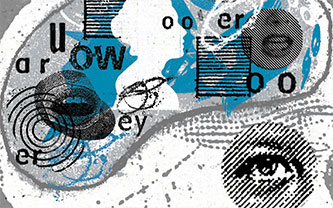In an effort to better meet the needs of students with IDD in a self-contained setting, Lindström adapted an observational tool originally intended for use in a large classroom with students who are typically developing or who have reading disabilities. She made video recordings of typical classroom instruction focused on phonics and word study, vocabulary and comprehension, and other areas. Then, she and her team coded 2,901 minutes of instruction for the nature of the instructional content, the quality of instruction and how engaged students were in that instruction. Overall, the team found that teachers were spending some time on foundational skills, but that more time and effort is needed to support students with IDD as they develop as readers. For example, because students with IDD may take longer to learn what sounds certain letters make, their teachers might spend more time on this and add more intensive supports so that they can apply it to unfamiliar words and contexts.
Lindström asked the teachers how they thought that they were spending their time in instruction. She found differences between the activities teachers reported doing and what the team actually observed. “What that highlighted for me was a mismatch as far as how the teachers understood fluency, for example, and what that would look like and how it was being enacted in their classrooms,” she says.
In addition, Lindström observed that the teachers were spending more time on behavior management and transitioning between instructional activities than on reading instruction, and more so than teachers who work with other populations of students.
“Children with intellectual disability tend to have more difficulties with task engagement, and they might be more likely to engage in escape-oriented behaviors. So, when schoolwork gets hard, then they might present with more challenging behaviors in order to stop the task,” she explains. “There were teachers who felt comfortable meeting the academic needs of the kids, but then the behavior was really challenging, or vice versa, that they felt comfortable addressing behavior but then they weren't trained in teaching academics. Part of that was about how we train our special ed teachers”—a system that varies by state and institution.
This work appears in the journal Research in Developmental Disabilities.
Lindström collaborates with colleagues with different focus areas, an approach she says helps uncover existing connections.
“I think what fascinates me is...how we learn from reading disabilities and move that to ID [intellectual disabilities], and how we can take that information to really improve instructional practices. And in so doing, we can make school a more enjoyable place for children and a more enjoyable place for teachers,” she says.
Lindström’s research, including “Project RISE: Examining Teachers’ Reading Instruction, Supports, and Expertise for Students with Intellectual and Developmental Disabilities,” in which she examines reading instruction for elementary school students with intellectual and developmental disabilities and how it relates to their reading growth, is supported by an Early Career Research Award from the Institute of Education Sciences’ (IES) National Center for Special Education Research.






